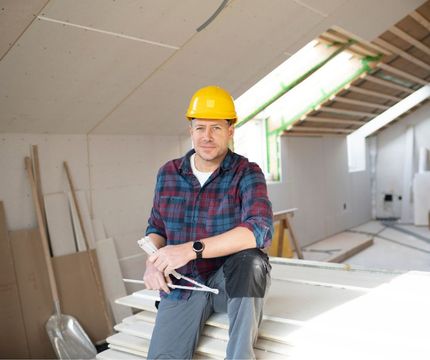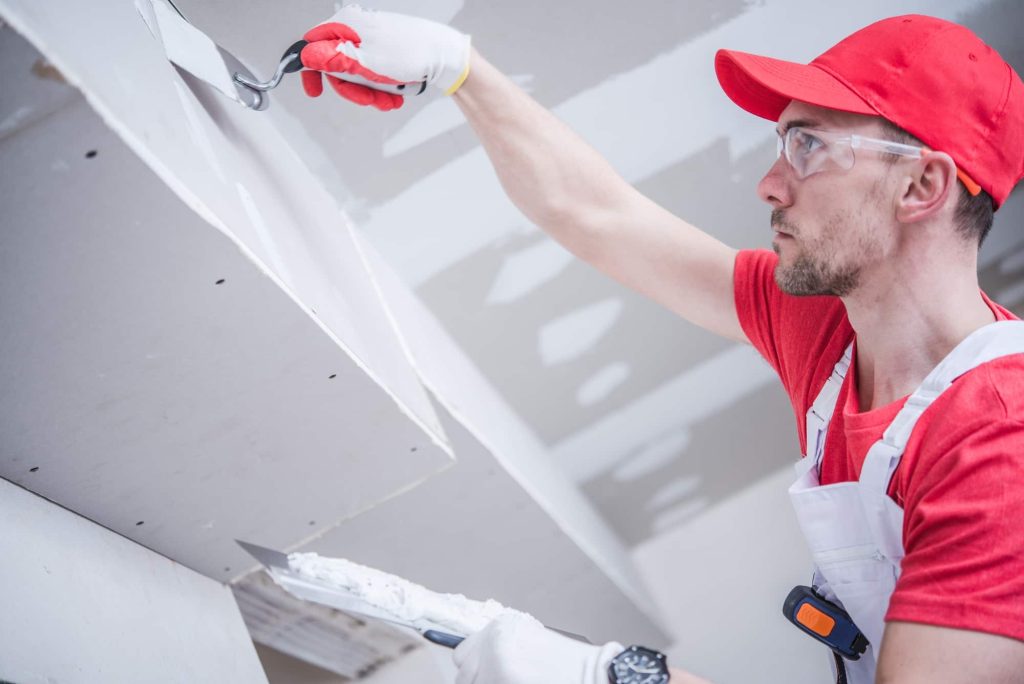Trusted Drywall Fort Worth Specialists for Seamless Outcomes
Trusted Drywall Fort Worth Specialists for Seamless Outcomes
Blog Article
Drywall Setup Made Easy: Tips for Perfect Outcomes
Drywall installment is usually regarded as an overwhelming task, yet with the appropriate method and knowledge, it can become a convenient undertaking. Selecting high quality products and preparing the installment location are critical initial steps that set the structure for success. Grasping methods for reducing, hanging, and finishing drywall can considerably impact the result. As we discover these important tips, you might find that even the smallest changes in your method can lead to remarkably enhanced outcomes, leaving you to consider just how these methods can change your following project.
Picking the Right Materials
Choosing the appropriate products for drywall installation is important to achieving a long lasting and visually pleasing surface. sheetrock repair fort worth. The main component, drywall sheets, generally can be found in various densities, with 1/2-inch sheets being typical for indoor walls. For areas calling for additional wetness resistance, such as shower rooms or cooking areas, think about utilizing eco-friendly board or concrete board, which are specially developed to hold up against humidity

Additionally, selecting the best fasteners-- either screws or nails-- is important for safeguarding the drywall to the framing. Drywall screws are typically preferred for their holding power and reduced danger of popping. Last but not least, think about the finishing touches such as primer and paint, which not only improve the look but also safeguard the drywall from wetness and wear.
Preparing the Installment Location
Prior to starting the drywall installation procedure, it is important to prepare the setup area extensively. This preparation entails numerous crucial steps to make sure a smooth and effective job. First, clear the location of any furnishings, appliances, or obstructions that can impede access. A tidy work space decreases the danger of damage to existing products and enables reliable activity throughout installation.
Following, evaluate the walls and ceiling for any flaws, such as fractures, holes, or mold. Address these concerns beforehand; patch any kind of problems and enable adequate time for repair work to completely dry. In addition, ensure that electric outlets, buttons, and plumbing are appropriately positioned and represented, as this will certainly impact drywall placement.
Take into consideration the environmental problems as well. A secure temperature and humidity level are vital for optimum bond and performance of the drywall products. If needed, make use of a dehumidifier or heating unit to create ideal conditions.
Cutting and Hanging Drywall
The key to efficient drywall setup exists in the specific cutting and dangling of the panels. Begin by determining the space accurately, taking into consideration any obstructions such as electric outlets or windows. Make use of a straight edge and an energy blade to score the drywall along your measurements, then snap it along the scored line for a clean break. For even more complex cuts, such as around outlets, a drywall saw can be made use of for accuracy.

Constantly work from the top down and entrusted to right, ensuring that you maintain a staggered pattern to enhance security. Appropriately hanging the drywall sets the foundation for a smooth surface, inevitably resulting in superior lead to your drywall project.
Insulation and Mudding Strategies
While correct cutting and dangling of drywall establishes the stage, the next important step involves grasping taping and mudding strategies to make sure a smooth finish. Insulation is essential for strengthening joints and stopping cracks; it includes installing tape into the applied joint substance (mud) Begin with a top quality fiberglass or paper tape, using the tape over the joint and pressing it into the wet mud utilizing a taping blade, guaranteeing no air bubbles stay.
When the tape remains in area, apply a thin layer of joint compound over the tape, feathering the edges to develop a smooth transition to the drywall surface area. Enable this layer to dry totally prior to sanding it gently to remove imperfections. Repeat this process, using added coats of mud as essential-- normally 2 to three coats-- while slowly expanding the application location with each layer to achieve a smooth appearance.
After the final coat dries, sand the surface area with article source a fine-grit sandpaper till smooth. drywall installation. Keep in mind to put on a mask during sanding to stay clear of breathing in dirt bits. Understanding these taping and mudding strategies is vital for achieving a professional-quality coating in your drywall installment
Ending Up Touches for Perfection
Achieving a perfect drywall installment exceeds taping and mudding; it finishes in the ending up touches that elevate the overall appearance. These final steps are vital in guaranteeing a professional-grade coating that improves the looks of your area.
Begin by fining sand the dried out joint compound to develop a smooth surface area. Make use of a fine-grit sandpaper and a fining sand block why not try this out or post sander for optimum control. Pay certain attention to sides and edges, as these locations tend to require more careful work. After fining click to find out more sand, wipe down the wall surfaces with a moist fabric to get rid of any type of dirt fragments, ensuring a clean surface area for painting.
Next, apply a guide specifically created for drywall. This action is important, as it assists seal the joint substance and supplies an uniform base for the overcoat. Once the primer dries, evaluate for any type of blemishes, and repair as needed.
Conclusion
Finally, effective drywall setup hinges on the cautious selection of materials, comprehensive prep work of the setup area, and accurate execution of reducing and hanging strategies. Mastery of taping and mudding processes is essential for attaining a smooth surface. Furthermore, attention to ending up touches, consisting of priming and touch-ups, ensures a professional-grade outcome. By adhering to these standards, the high quality of workmanship can be significantly improved, adding to the general aesthetic and performance of the room.
Drywall setup is frequently perceived as a daunting task, yet with the right strategy and knowledge, it can end up being a manageable venture.Picking the ideal products for drywall installation is vital to accomplishing a sturdy and visually pleasing surface.Prior to starting the drywall setup process, it is crucial to prepare the installment location thoroughly. Mastering these taping and mudding strategies is essential for attaining a professional-quality coating in your drywall installation.
In verdict, successful drywall setup pivots on the careful choice of materials, comprehensive preparation of the installation area, and exact implementation of cutting and hanging methods.
Report this page